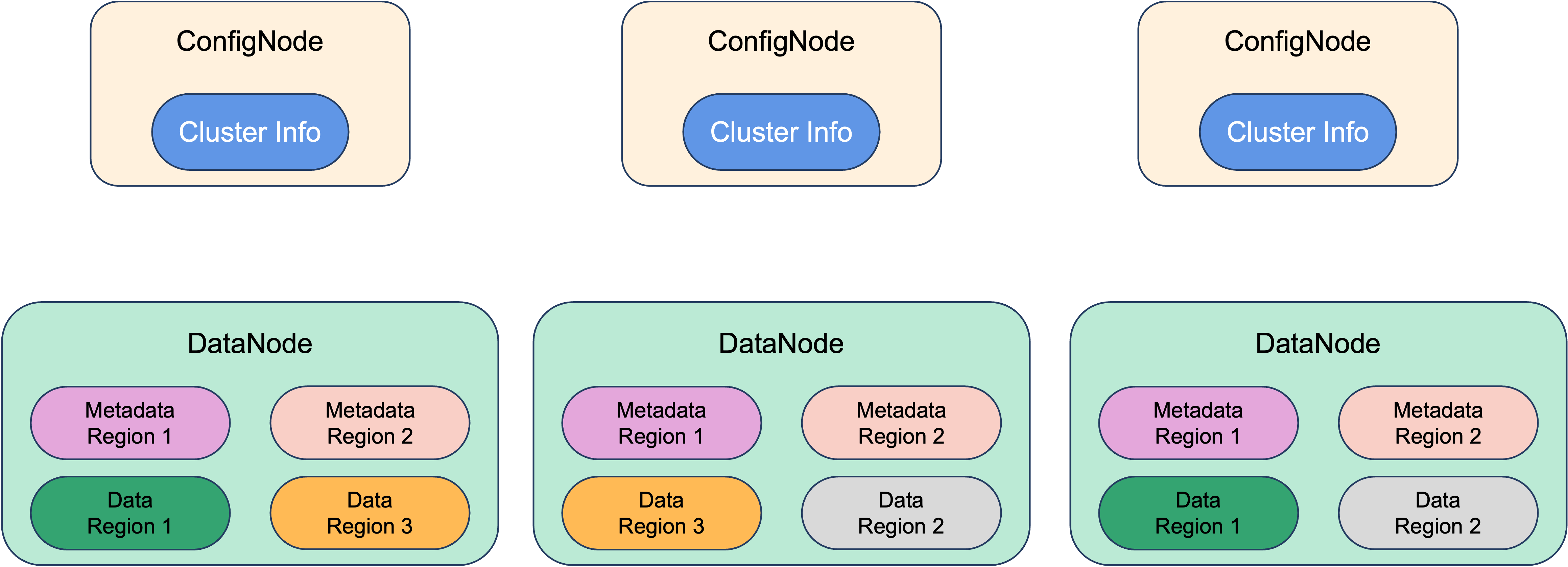We have previously explored the differences between Apache IoTDB and other time-series databases such as InfluxDB and Apache HBase in terms of architecture, performance, and functionality. In this article, we turn our focus to a systematic comparison between Apache IoTDB and OpenTSDB, analyzing them across five key dimensions:
Distributed Architecture
Ease of Deployment
Analytical and Computational Capabilities
Performance
Product Evolution and Maintenance
Overview
Apache IoTDB (Internet of Things Database) is an open source time series database, an Apache Top-Level Project specifically designed for efficient and scalable time-series data management in IoT and industrial big data scenarios.
OpenTSDB is a distributed and scalable time-series database built on top of Apache HBase. It is designed to efficiently handle high-throughput time-series data, such as monitoring data, sensor readings, and IoT metrics.
Comparison: Distributed Architecture
Apache IoTDB
Apache IoTDB provides native support for distributed architectures, with extensive optimizations tailored for IoT scenarios, maximizing availability, scalability, and performance.
Optimized Data Partitioning and Load Balancing: IoTDB is designed to handle scenarios where recent data is frequently accessed while historical data access is less frequent. This enables efficient data partitioning and lightweight shard routing, even for large-scale datasets spanning billions of devices and years of historical records. The system has been tested for petabyte-scale time-series data storage.

Consensus Protocol Framework: IoTDB is the first and currently the only time-series database to propose and implement a unified consensus protocol framework. Users can choose from different consensus algorithms based on their needs for performance, availability, consistency, and storage cost. The framework includes:
IoTConsensus: A high-performance consensus protocol tailored for IoT time-series scenarios.
RatisConsensus: A strong-consistency consensus protocol based on Apache Ratis.
SimpleConsensus: A lightweight single-replica consensus protocol.
Extensive Observability Metrics: IoTDB offers thousands of built-in monitoring metrics covering read/write operations, consensus algorithms, load balancing, and system resources, ensuring reliable real-time monitoring.
OpenTSDB
OpenTSDB operates through a Time Series Daemon (TSD) alongside command-line tools. Each TSD is independent, with no master node or shared state, allowing multiple TSD instances to run in parallel to handle increasing loads.
Storage on HBase or Google Bigtable: OpenTSDB relies on HBase (or Google Bigtable) for storing and retrieving time-series data. Its schema is optimized to aggregate similar time-series efficiently, minimizing storage overhead.
Users interact solely with TSD instances, without direct access to the underlying HBase storage layer.

Key Differences
![]()
Apache IoTDB: Consensus Concept

OpenTSDB: HBase Chain Replication Architecture
Comparison: Ease of Deployment
Apache IoTDB
Apache IoTDB is designed for time-series data management with an innovative architecture that reduces deployment complexity and hardware requirements. Unlike traditional databases requiring a complex distributed setup, IoTDB:
Delivers high performance on single-node deployments, eliminating the need for a multi-node setup in smaller-scale scenarios.
Supports online horizontal scaling, enabling seamless cluster expansion without downtime.
Minimizes configuration overhead, making it easier to deploy and maintain.

Apache IoTDB: Architecture of a Common 3C3D Cluster
OpenTSDB
OpenTSDB’s deployment model presents certain trade-offs:
Strong integration with the Hadoop ecosystem allows leveraging HBase’s distributed storage but requires additional dependencies such as HDFS and ZooKeeper, increasing initial setup complexity.
High Cardinality Sensitivity: OpenTSDB struggles with high-cardinality datasets, often leading to HBase region hotspot issues, requiring manual intervention for pre-splitting.
Single-node Mode Limitations: OpenTSDB supports a standalone mode, but it still depends on a full HBase stack, resulting in high resource consumption even in lightweight scenarios.
Comparison: Analytical and Computational Capabilities
OpenTSDB relies on HBase’s distributed key-value storage, with limited built-in analytical functions. Advanced computations require external systems like Spark or Hive.
Supports basic aggregation functions (count, sum, avg, min, max).
Lacks advanced statistical functions (standard deviation, variance, percentiles).
By contrast, Apache IoTDB provides:
30+ Built-in Functions: Including aggregation (
sum/avg), statistical analysis (std/variance), time-series features (first_value/last_value/time_diff), and data quality evaluation (continuous_count).Advanced Query Capabilities: Supports interval-based, categorical, and continuous-sequence queries.
Time-Series Data Analysis: Offers anomaly detection, data profiling, frequency analysis, and data repair.
AINode for Machine Learning: Provides built-in time-series forecasting and anomaly detection algorithms, enabling on-device model inference with minimal setup.
Comparison: Performance
Performance is critical when selecting a time-series database. The TPCx-IoT benchmark measures IoT gateway system performance. Although OpenTSDB is not listed, its reliance on HBase suggests similar performance levels.

Comparison: Iteration and Maintenance
GitHub activity analysis reveals OpenTSDB, a pioneer in time-series data storage, peaked in development between 2014-2016 but has since stagnated. In contrast, Apache IoTDB demonstrates strong ongoing development:
IoTDB’s weekly commit rate (100-300 commits) far exceeds OpenTSDB, ensuring faster feature updates and bug fixes.
IoTDB continues to differentiate through native data compression and edge computing support, making it more suitable for modern IoT applications, whereas OpenTSDB is better suited for historical data storage scenarios requiring stability over rapid iteration.


Conclusion
Selecting a time-series database for IoT and big data applications requires a deep understanding of technical evolution, architecture, and core performance metrics. This article provides a multi-dimensional comparison of Apache IoTDB and OpenTSDB, covering distributed architecture, ease of deployment, analytical capabilities, performance, and maintenance.
For IoT architects managing massive device connections and real-time analytics, Apache IoTDB offers high performance, flexibility, and scalability, making it a compelling choice for building a robust and efficient time-series data infrastructure.




